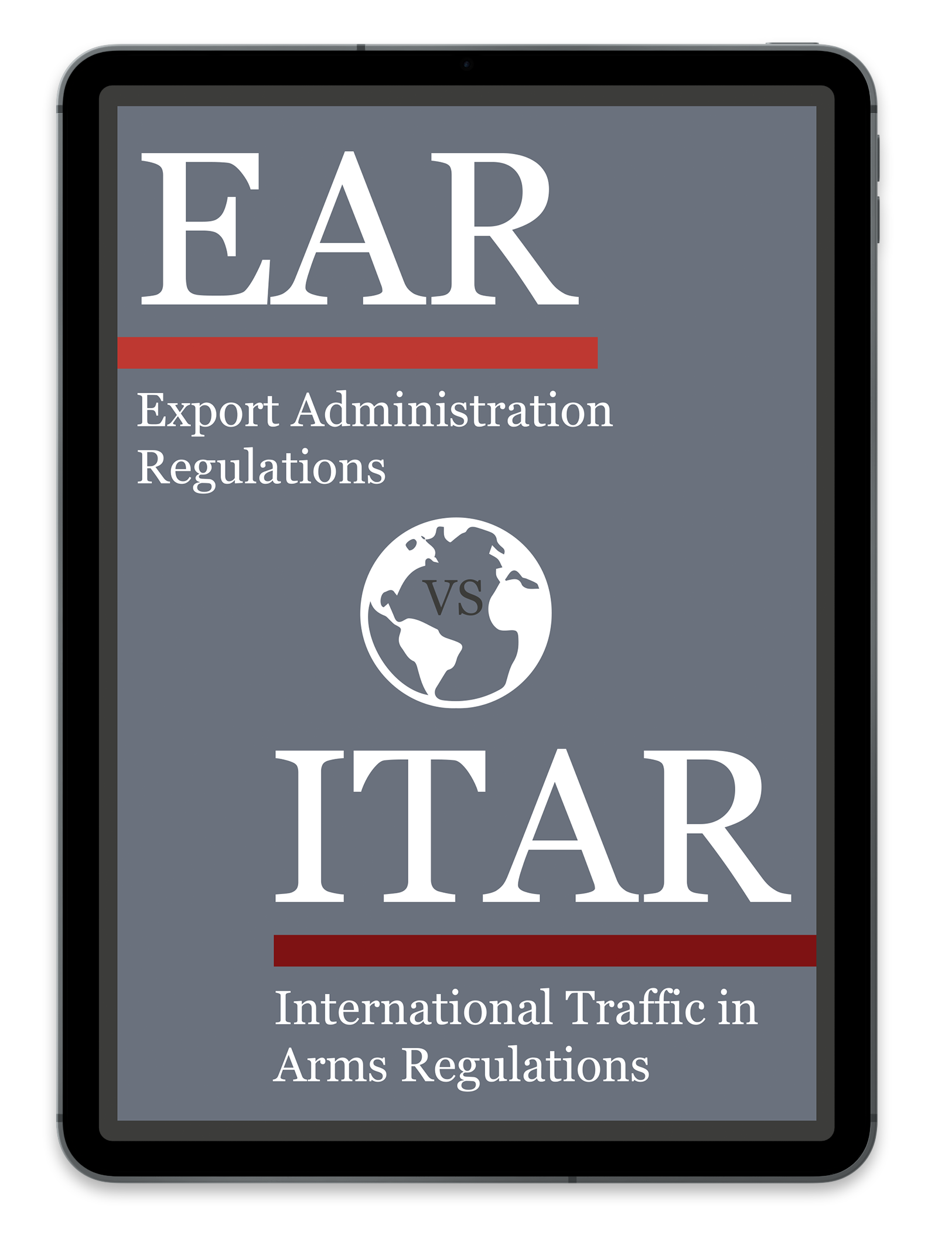
Export Controls, Contracts, and Lemonade
Co-Author, Allen A. DiPalma, Senior Consultant at Traliance
Lemonade and summertime. They go hand-in-hand like the export controls regulations and contract terms. Many people likely find it more relaxing to sit down with a cool glass of lemonade on a hot summer day versus analyze Federal Register Notices. We’re here to make the connection between export controls and contracts a bit easier to tackle. This article will explain 6 actions you can take to get a handle on contract terms and conditions that can significantly affect the export controls requirements that your university or institution must follow when conducting U.S. government-funded research.
#1: Understand Fundamental Research and Its Scope
According to National Security Decision Directive 189 (NSDD189), Fundamental Research is:
“…basic and applied research in science and engineering, the results of which ordinarily are published and shared broadly within the scientific community, as distinguished from proprietary research and from industrial development, design, production, and product utilization, the results of which ordinarily are restricted for proprietary or national security reasons.”
This definition has been codified in multiple export controls regulations as an exclusion or exemption to the regulations. This means that the results of fundamental research fall outside of the scope of the regulations. (That means the export control classification number does not need to be determined!) Thus, it is commonly referred to as the Fundamental Research Exclusion or FRE. This exception appears in Part 734.8 of the Export Administration Regulations (EAR), and Part 120.11(8) of the International Traffic in Arms Regulations (ITAR).
There are limits to this exclusion. In general, this exclusion applies only to the results of research which can take the form of raw data, diagrams, charts, graphs, processes, or other results that can be included in a publication. Under the EAR, it also covers some software. It does not cover tangible physical items that originate from fundamental research.
The FRE can be lost if an institution or individual accepts a publication restriction, or the research is funded by the U.S. government and there are access and dissemination controls applicable to the resulting research information. In most cases, these restrictions appear in a research project’s terms and conditions.
#2: Identify Troublesome Clauses
Research project restrictions typically appear in either the program announcement or the terms and conditions of a research award. In rare cases, restrictions can also appear in the statement of work, an appendix, or through a related non-disclosure or confidentiality agreement. In government contracting, there are some FAR and DFAR clauses that should trigger export controls concerns. Here are two of them:
DFAR 252.204-7000 (Disclosure of Information, October 21, 2016). This DFAR clause requires review and approval of any unclassified information pertaining to the contract or program related to the contract by the Contracting Officer (CO). Prior to the release of the October 21, 2016 version of this clause, the only way to offset this publication restriction was to have the CO agree to remove the clause. The current version of this clause contains section (a)(3) which allows the CO to provide a written statement to the contractor affirming that the results of the project are fundamental research results as defined in NSDD-189 without having to remove the clause.
DFAR 252.204-7012 (Safeguarding Covered Defense Information and Cyber Incident Reporting, December 2019): This DFAR clause is applicable whenever a contractor will be processing or storing covered defense information (CDI). It requires contractors to implement National Institute of Standards and Technology (NIST) Special Publication (SP) 800-171 “Protecting Controlled Unclassified Information in Nonfederal Information Systems and Organizations”. This clause often appears alongside DFARS 252.204-7000 in a contract. Applicability of the 7012 hinges on whether the contractor will be processing or storing covered defense information. Unfortunately, CO’s usually cannot remove the clause, so even if the CO confirms that no CDI will be processed or stored by the contractor, there is no mechanism similar to section (a)(3) of the 7000 to formally cancel the clause. Therefore, a common practice is to obtain a written statement from the CO confirming that no CDI will be processed or stored on contractor systems, and treat the clause as “self-deleting”.
Restrictions can also appear in other contract clauses, such as ones covering the review and approval of foreign nationals. These restrictions should always trigger additional reviews for export controls by knowledgeable personnel. The Federal Demonstration Project (FDP) together with the Council on Governmental Relations (COGR) and the Association of American Universities (AAU) released a report based on a survey of their memberships that provides more granularity to this topic. Although the report is older, the results and descriptions are still relevant.
#3: Identify Restrictive Distribution Statements
Under Department of Defense (DOD) contracts, Contracting Officers include what is known as a distribution statement. There are 6 different distribution statements ranging from A through F. The chart linked here shows the different distributions statements and reasons for restrictions. Distribution statement A (Distribution Unlimited) should be the preferred statement if the project is confirmed to be a fundamental research project. Other statements contain different types of restrictions and must be reviewed to determine if they would nullify the FRE.
#4: Understand the Benefits of Preserving the Fundamental Research Exclusion
While a growing number of universities have decided to accept more restricted research projects, fundamental research projects continue to account for the majority of research funding at universities. This is due to a few reasons:
- Fundamental research projects most closely align with a university’s primary mission which is to teach, train, and conduct research that benefits society.
- Universities are free to include foreign national faculty, staff, and students in the research which complements university policies that promote non-discrimination, diversity, and inclusion.
- Fundamental research projects allow students and other junior researchers to participate in real research projects, and to use FR results to support doctoral theses.
- Since the results of FR projects are exempt from export controls regulations, there is much greater flexibility in sharing results with foreign nationals and across borders.

#5: Form Partnership Between Export Controls Office and the Sponsored Programs Office
A good export controls program depends on internal relationships between the export controls office and other central offices that have intersections with export controls. None is more important than the relationship between the export controls office and the office of sponsored projects. Grant and contract officers are privy to sponsor program announcements and award terms and conditions that reveal restrictions that would trigger export controls licensing. Thus, it is important to train sponsored project staff to identify any problematic language. They should also understand why it is problematic, and what type of cases to escalate to export controls staff for assistance. Universities use different methods to manage this process flow, but many rely on the use of internal checklists to alert sponsored project and export controls staff of possible export controls issues in both proposals and awards. Two general questions that universities usually ask are:
- Does the project allow for free publication of all research results?
- Are there any restrictions on who may participate in the project?
The answers to these and other checklist questions can be used to assist sponsored project and export controls staff in identifying problematic language and work together to mitigate or manage any export controls issues.
#6: Educate Your Researchers and Departmental Research Administrators
Export controls training is important for all research stakeholders. However, an institution’s approach to this training can be challenging due to staffing levels and the overall complexity of the academic environment. A recent poll conducted by the Association of University Export Officers (AUECO) revealed that greater than 70% of universities currently have 2 FTEs or less devoted to the export controls function. Combine this with the fact that the typical university environment is extremely diverse in terms of foreign national students, foreign engagements, and active research projects in multiple STEM research areas. Therefore, an institution will need to be very targeted in its approach to training knowing that each audience will have a different role in the process. Explaining to each stakeholder those principles that apply the most in their environment will be important, as well as providing a contact if there are questions.
What’s Next?
How do you move forward to more efficiently screen contract terms and conditions for restrictive clauses? Start by building the right people connections within your institution. Pour a tall glass of cold lemonade, and then bring one to your research administration peer. If your institution is just getting started on the export compliance journey, then begin by exploring where export controls screening can occur in the current workflow for sponsored programs.





